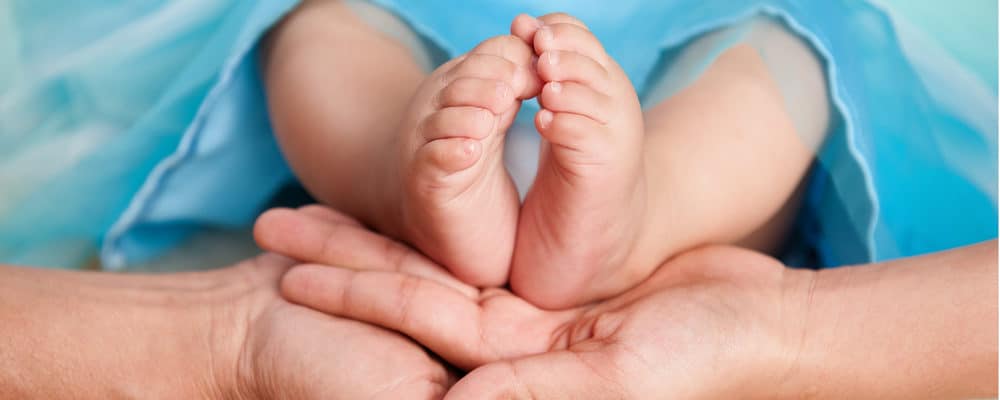
Having a natural or home birth is a not new medical concept and this method has been applied scientifically. However, if applied incorrectly, it can lead to an unfortunate situation.
In essence, the concept of natural birth must be understood properly? Please learn through the following article of aFamilyToday Health .
What is natural childbirth?
1. What is natural convenience?
Lotus Birth or "natural consensus" is not a new method in medicine, but this method needs to be applied at the right time, the right kind of disease.
2. What is natural childbirth?
When the baby is born, the umbilical cord is not removed, but the placenta is still attached to the child's body until the umbilical cord falls off on its own.
There are currently no specific scientific studies on this way to give birth in a natural manner. Many obstetricians and gynecologists warn about the risk of infection when the baby is attached to the placenta for days after birth.
Childbirth at home in advanced countries
Currently in many advanced countries, the birth at home is still conducted and often takes place in water environments. When the mother gives birth at home, there will always be a team of obstetricians and obstetricians on duty with modern medical equipment to promptly support if there are any uncertainties in the labor. But to be able to give birth at home, a mother must meet the following conditions:
No diabetes or high blood pressure
There is no risk of complications such as preterm birth, pre-eclampsia or breech pregnancy
The mother had never had a cesarean section or had a surgery on the uterus.
In addition, before deciding to give pregnant women a baby at home, the doctor will conduct a lot of prenatal screening tests to assess the health of the pregnant woman and fetus in order to minimize the possible risks. out for both mother and baby. If, after screening, the pregnant woman and the fetus are not at any risk, the doctor will advise on possible obstetric complications so the family should consider whether or not to choose a home birth.
Childbirth at home in our country
Childbirth at home in our country is not uncommon, but usually only occurs in remote areas. However, at present, the number of people who support this method of birth tends to increase. Unlike in foreign countries, giving birth at home in our country without the support of medical staff, without sterile delivery tools, babies are not vaccinated against disease, do not cut the umbilical cord for Babies, mothers are not allowed to have prenatal tests ...
The risk mom and baby face when giving birth at home
Having a baby at home really contains many dangers for both mother and baby.
1. Mother
For a long time, her grandparents used to say "pregnant woman" to refer to the dangers that a pregnant woman must face during pregnancy and even during childbirth. In fact, the modern medical industry has highlighted 5 common obstetric complications that are dangerous for both the mother and the baby, and even death such as:
Postpartum haemorrhage : occurs even to mothers who give birth for the first time
Broken uterus
Tetanus umbilical cord
Preeclampsia
Postpartum infections.
Even when a woman gives birth in a modern hospital, these complications can happen. But the mother has a high chance of overcoming the danger due to timely intervention by the doctor.
Choosing a home birth without the support of an obstetrician or medical staff puts both the mother and the baby in danger if the mother has a difficult birth, the inverted crown, the fetal womb or the placenta. religion. Difficulty birth can seriously affect the health of both mother and baby, even death.
In addition, giving birth at home also puts mothers at high risk of genital prolapse due to not having an episiotomy, leading to genital tract infections. This is one of the causes of genital prolapse (prolapse).
2. Baby
Having a baby at home puts babies at risk:
Babies born at home are at high risk of asphyxiation because they do not have oxygen cylinders and viscous suction devices
Failure to cut the umbilical cord and let the placenta remain attached to the baby's body until the umbilical cord falls off on its own puts the baby at a higher risk of infection when the placenta dies. This is a giant bacteria colony.
The risk of death is high if the baby has birth defects that may not be detected by antenatal care. For example: Children with congenital heart disease, if after birth without timely medical intervention, they will have a high risk of death.
Risk of infection due to non-sterile delivery devices, infection from family members.
So, to ensure the safety of both mother and baby, go to health facilities to give birth. Do not blindly listen to one's propaganda about a spontaneous birth because it is possible that money can be lost.












